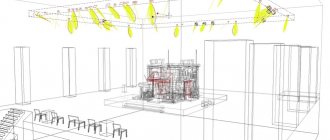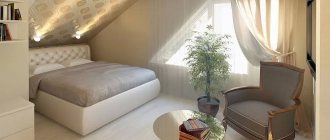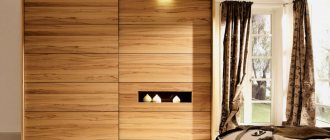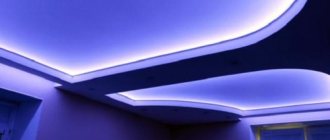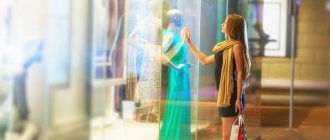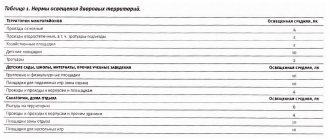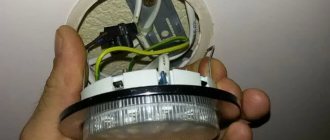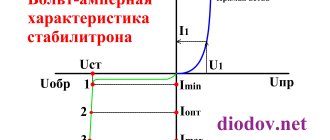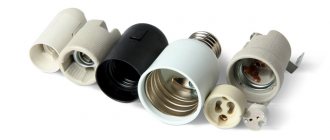Home/Services/Lighting according to SanPiN
Lighting standards for various types of premises in 2022 are regulated by SanPiN 1.2.3685-21 “Hygienic standards and requirements for ensuring the safety and (or) harmlessness of environmental factors to humans.” It includes the main provisions of sanitary rules for lighting and insolation of public and industrial premises, which are no longer in force in 2022:
- SanPiN 2.2.1/2.1.1.1076-01 “Hygienic requirements for insolation and sun protection of residential and public buildings and territories.”
- SanPiN 2.2.1/2.1.1.1278-03 “Hygienic requirements for natural, artificial and combined lighting of residential and public buildings.”
What is SanPiN?
SanPiN is a set of sanitary rules and standards that are aimed at maintaining a high level of sanitary and epidemiological well-being of the population. Sections of SanPiN were created on the basis of data from the study of a complex of factors influencing the sphere of human life. SanPiN on lighting establishes the principles of using natural and artificial light for buildings and areas for residential and public purposes.
Attention! If you have any questions, you can chat for free with a lawyer at the bottom of the screen or call Moscow; Saint Petersburg; Free call for all of Russia.
For your information
SanPiN 1.2.3685-21 for lighting in 2022 includes a large number of individual sanitary standards and hygienic regulations that functioned previously. In particular, it specifies the maximum lighting parameters in workplaces and hygiene standards for organizations providing education, recreation and recreational activities for children and youth.
Basis for enactment of SanPiN 1.2.3685-21:
- Article 39 of Federal Law No. 52-FZ of March 30, 1999 “On the sanitary and epidemiological welfare of the population.”
- clause 2 of the Regulations on state sanitary and epidemiological regulation, authorized by Decree of the Government of the Russian Federation of July 24, 2000 N 554.
- Resolution of the Chief State Sanitary Doctor of the Russian Federation dated January 28, 2022 No. 2.
Information regarding lighting requirements is contained in section V of SanPiN 1.2.3685-21. Physical factors (except ionizing radiation).
Attention
The full text of lighting requirements according to SanPiN in 2022 can be viewed at the link here.
Modern solutions and ideas
Office design options
The latest fashion trends in office lighting combine:
- functionality;
- efficiency;
- aesthetics.
Functionality implies comfortable lighting, which has the most beneficial effect on labor productivity.
Cost-effectiveness is achieved through energy-saving technologies and installation of lamps that do not require frequent maintenance.
Aesthetics are manifested in the correspondence of the lamps to the office design and decoration of the premises.
The lighting of different rooms and zones also differs. To reduce costs, dimmers (especially in non-working rooms), “pass-through” switches for corridors (cutting off electricity from different ends) and control sensors are used.
Sensors automatically detect the presence of people, light levels, temperature and humidity in the room. They transmit signals to controllers that control lighting. Controllers increase or decrease the light output depending on the time of day and the presence of employees. Light lines are often divided into near and far in relation to the windows. They are managed separately and independently of each other.
The luminous flux of the luminaire lines is different due to the proximity to the window
If the distant lamps can work all day, then those closest to the window only half the time. The cost of such control systems is quite reasonable; their installation can be compensated for quite quickly by reducing electricity costs.
“Smart” lighting systems are being introduced. It connects to the IT infrastructure, ventilation and heating system of the building. Sensors and controllers transmit their data to the smartphone of the responsible employee. An employee can use a smartphone to monitor what is happening with communications in different parts of the building. Other employees can connect to the smart system via smartphones and adjust the brightness level at their workplaces independently. True, the presence of an employee at the workplace can be easily tracked by the lamp.
- Related Posts
- What is a driver and why do LEDs need it?
- TOP 10 LED lamps of 2022
- The first light bulb
Latest innovations in SanPiN lighting in 2022
| Was | It became |
| Lamp color – white, warm white, natural white. | The exact color temperature is indicated - from 2400 to 6500K. A limit has been introduced for LED lamps at 4000K. |
| Types of light sources – discharge, LED and fluorescent. | Use of energy efficient lamps. |
| Color rendering index <90RA | Color rendering index < 85RA |
| 20 lux with an average standard brightness on the roadway of 1.2 - 1.6 cd/m2. | 20 lux with an average standard brightness of the roadway from 1.2 to 2.0 cd/m2 inclusive. |
| Standardized indicators for banking institutions | There are no separate rules for banking institutions |
| A large list of premises with prescribed lighting standards - 192 items. | The list of medical premises in the table of standard illumination indicators has been reduced to 95 positions. |
| SanPin contains schemes for calculating insolation of adjacent territories and design points of buildings. | The schemes for determining calculation points and the scheme for calculating insolation have been removed. |
Types of lamps for ceilings
Built-in "Armstrong"
Built-in model
Built-in models save office space. They are mounted directly into a suspended or suspended ceiling. A popular solution is lamps that are built into Armstrong ceilings.
This lamp is made in the shape of a square measuring 600×600 mm. It is mounted instead of one square ceiling. The lamp is coated with a mirror composition for maximum light diffusion. The light source is tubular fluorescent lamps or an LED panel.
Connection of lamps is parallel. If one burns out, the others will continue to work. The wires are hidden behind the ceiling itself.
The advantages include the cost of built-in models and the relative ease of installation.
Another option for built-in models is point light sources (spots). They are suitable for suspended ceilings in rooms where bright lighting is not needed (corridors, toilets, rest rooms). With their help it is easy to organize zonal or decorative lighting.
Built-in spot
Invoices
Overhead models are attached directly to the ceiling or walls of the office. Mounting strips are required for installation. As a rule, they come complete with lamps.
Overhead models differ in appearance. They can be made in the form of a chandelier, lampshade, spot. Spots provide the ability to adjust the direction of the light flow.
It is better to use fluorescent and LED lamps in such lamps. They heat up the least during operation.
The advantages of overhead models include:
- simple installation, accessibility;
- ease of maintenance and replacement of lamps;
- various design options.
Among the disadvantages, it is worth noting a possible fire hazard. The materials from which the ceiling and walls are made must withstand the temperatures to which the lamps heat up during operation. In addition, with the overhead fastening method, the ability to remove excess heat deteriorates.
For example, fluorescent lamps when open heat up to 50-60⁰C, and when closed they can heat up to 90⁰C. High-quality LED lamps are equipped with a radiator that removes heat. They heat up to 65⁰С, and some elements (for example, the driver capacitor) – up to 100⁰С.
Hanging
Suspended models are attached to the ceiling using an anchor hook. The wires are masked with decorative cables or chains.
This lighting option is the most affordable in terms of installation and maintenance costs. However, it is only suitable for rooms with high ceilings.
Any type of light source is suitable for pendant lights as they have very good heat dissipation. The heat from the lamps does not reach the ceiling and walls. In terms of energy efficiency, fluorescent and LED lamps are best suited.
Lighting standards
Basic standards for natural and artificial light in 2022 according to clause 82 of SanPiN:
- Average illumination on the working surface is the ratio of the luminous flux and the area of the element on which it falls.
- The pulsation coefficient Kp is an indicator of the variability of the light flux over time.
- UGR is an indicator of glare discomfort that occurs when brightness varies across a person’s field of vision.
- Natural light coefficient KEO - the ratio of internal natural illumination in a room to external horizontal illumination from a completely open sky.
- Brightness cd/m2 is the ratio of the strength of the luminous flux emitted by a surface to the area of its projection onto a perpendicularly located plane.
- The level of visual work - it depends on the size of the objects with which a person works using vision.
- Illumination uniformity is the ratio of the minimum illumination value to the average value on a specific surface.
Types of lighting
There are different classifications of lighting. So, according to localization, it can be of the following types:
- General. Assumes uniform lighting of the room without the presence of dark or lighter areas. The presence of only such lighting is usually observed in areas where the work process is carried out part-time.
- Local. Local lighting helps to additionally illuminate certain work areas: a computer or school desk, equipment and machines. It involves the installation of various lighting fixtures in close proximity to the workplace.
According to the standards, the use of exclusively local lighting is unacceptable, since there will inevitably be differences in light in the room - from deep darkness to bright light. This will cause vision problems for workers. Based on light sources, lighting is also divided into several types.
Natural
Natural lighting is created by the forces of nature: direct sunlight, as well as diffuse (reflected) light from the sky. The lack of natural light is unfavorable for a person, because it is to it that the eyes are best adapted. Such light depends on the time of year and period of day, this is its main drawback. But the quality and volume of incoming natural light also depends on the design of the building, the number and size of windows.
Worth knowing! Natural light is measured by KEO - natural light coefficient. It is equal to the ratio of illumination in a building and illumination in an open area in clear weather. There are more KEOs in the southern regions than in the northern ones.
There is even a special light climate map, consisting of 6 zones, according to which windows in buildings should be designed. Natural light is divided into the following types:
- upper (light penetrates through openings in areas with differences in height of the house);
- side (light enters through the windows of the external walls);
- combined (combination of the two previous types).
Artificial
Without artificial lighting at twilight, on a cloudy day or in winter, when it gets dark early, normal work processes are impossible. Additional light sources include lamps, lamps, floor lamps, sconces and other electrical appliances. Usually, halogen and LED lamps are purchased for offices and production. Conventional incandescent light bulbs are now rarely used, since they waste a lot of electricity and quickly break down.
Most often, lighting is mixed, when natural is combined with artificial. The latter is also divided into the following types:
- Working. Regular lighting, which is used daily by employees, helps ensure the workflow.
- Emergency. It turns on only in case of an accident, in an emergency situation, when the main lighting is turned off.
- Evacuation. It is used to illuminate evacuation routes for people in emergencies; it is usually not as powerful as a working one.
- Security. Used by security personnel, it is not present at all enterprises, but when necessary. Not standardized by intensity.
- On duty. Remains on even after the end of the work process (for example, small lighting of corridors in large buildings).
Requirements
- Color rendering index for artificial light lamps – Ra>85%.
- The maximum value of Kp for premises with a personal computer is 5%.
The permissible level of ultraviolet radiation according to SanPiN in 2022 is set based on the wavelengths for each spectrum:
- UV-A – 400-315 nm;
- UV-B – 315-280 nm;
- UV-C – 280-200 nm.
Light brightness limits for working surfaces relative to the working surface area:
- 2000 cd/m2 – for S<0.0001 m2.
- 1500 cd/m2 – for 0.0001< S<0.001 m2.
- 1000 cd/m2 – for 0.001< S<0.01 m2.
- 750 cd/m2 – for 0.01< S<0.1 m2.
- 500 cd/m2 – for S>0.1 m2.
To calculate lighting standards according to SanPiN, categories of visual work were introduced. There are 8 categories in total. They are determined depending on the ratio of the minimum object recognition d and the distance from the object to the eyes l:
- d/l<0.0003 – I category.
- 0.0003<0.0006 – II category.
- 0.0006<0.001 – III category.
- 0.001<0.002 – IV category.
- 0.002<0.01 – V category.
- d/l<0.01 – VI category.
Grades VII and VIII refer to non-precise types of visual work - they do not require constant viewing of small objects. Category VII includes work with luminous objects in hot industries, and category VIII is general monitoring of the production process and the state of communications. There is also internal gradation within the categories.
GOST P 55710—2013
| Table 7 - Rest rooms, sanitary facilities, health centers | ||||||||||||||||||||||||||
|
Natural lighting according to SanPiN in 2022
The basic standard for determining natural and combined lighting is KEO. In 2022, there is a gradation of this lighting indicator for different types of premises. The KEO limit values for natural and combined illumination will be different.
Insolation indicators for preschool and school educational organizations are presented in table. 5.59 SanPiN. The requirements for natural light in enterprises and public institutions of various types are set out in table. 5.25 SanPiN.
Natural lighting of office premises
Using natural light
Don't underestimate natural light. First of all, it's free. Secondly, it is beneficial for a person’s physical and psychological health.
When building an office, it is worth laying out the maximum possible window openings. Windows can be located in walls or on ceilings. This option is possible for the top floor, but using light pipes you can bring sunlight to the lower level. Light pipes are special tunnels with an internal reflective coating. They are laid from the roof of the building downwards and distribute natural light.
Light pipes
Natural light should also be used wisely. It is not recommended to arrange furniture so that the employee sits facing the window. It is best to place tables with their left side to the window opening.
Also remember that sunlight from windows shines most fully at a distance of the first 6 meters. Further, the level of natural light falls.
To reduce excessive brightness and glare on a sunny summer day, use light curtains or blinds.
Artificial lighting
The main indicators of artificial lighting standards according to SanPiN are illumination, the overall UGR indicator and the illumination pulsation coefficient Kp. According to clause 152 of SanPiN, the temperature of artificial light sources in 2022 should be in the range from 2400K to 6500K. The wavelength range of light radiation is from 320 to 400 nm; shorter wavelengths are not allowed for use.
Attention
There is a restriction on the use of incandescent lamps - lamps with a total power of 100 W are prohibited. It is recommended to use light sources with high energy efficiency, maximum luminous efficiency and long service life.
Calculation of the number of lamps
Let us take 500 lux as the standard illumination value. As lamps we will take LED OFLED SL 66 608A (for Armstrong ceilings). Their technical characteristics:
| Index | Meaning |
| Light flow | 4889 lm |
| Power | 48.8 W |
| Luminous output | 100 lm/W |
| dimensions | 35×595×595 mm |
Let's calculate how many lighting fixtures are needed to create the required illumination.
To do this, you still need to know the area of the office (calculated as the product of the length of the room and the width; let’s take it as 200 m2).
A simplified formula for finding the total luminous flux:
where F is the desired total luminous flux, lm;
E – standard room illumination, lux;
S – office area, m2;
k – correction factor, which depends on the height of the ceiling (let’s take the height as 3 m, n=0.5).
Thus, the lamps must create a total luminous flux equal to 200,000 lm. The luminous flux of one is 4889 lm, which means that the following light sources will be needed:
where n is the number of lamps, pcs;
F – total luminous flux, lm;
Fn – luminous flux of one lamp, lm.
You will need 41 pieces.
However, the given formulas are simplified for preliminary calculations and independent estimates. It does not take into account some factors:
- reflective ability of walls, ceilings, their color: glossy light coatings reflect light, and dark matte coatings absorb light;
- distance from lamps to work surfaces;
- safety factor.
For accurate calculations, it is better to use the services of professional lighting design firms.
Hygienic requirements for light
There should be enough light in the room for comfortable visual work. This can be achieved through natural daylight, artificial sources and a combination of both.
Natural illumination is achieved through direct or reflected light from the open sky, which penetrates the openings of the building structure. Any room must be exposed to direct and diffuse sunlight. Solar radiation has bactericidal properties and stimulates the production of vitamin D in the body.
Basic lighting requirements according to SanPiN in 2022:
- suitability for the purpose of the premises.
- safety for human vision.
- the presence of light control mechanisms.
- no glare, harsh shadows, excessive heat or release of harmful substances.
IMPORTANT
Insufficient light in the room leads to increased fatigue, decreased performance and the development of various diseases. Also, lack of light increases the risk of injury during the work process.
The parameters of the standards for hygienic requirements for lighting of natural, artificial and combined types are set out in table. 5.52.
Industrial lamps
Industrial lamps are used to illuminate production facilities, industrial workshops, construction sites, warehouses, and underground communications. To illuminate large objects, powerful lighting devices are used - spotlights.
Manufacturers of light sources for industrial premises offer lamps that best meet the sanitary and hygienic requirements of legislation and the needs of industry. Modern lighting devices can not only perform the basic tasks of lighting rooms, but also significantly improve performance characteristics. There are different options for classifying industrial lighting.
According to the installation method, lamps are called floor, ceiling, attached, end, wall, built-in and suspended.
For the production of industrial lamps, different types of light sources are used.
Incandescent lamps
Traditional light source. This is a familiar light bulb. Used as a standard for evaluating lighting fixtures.
They have significant disadvantages:
- increased heat transfer;
- distortion of color perception due to the yellow-red spectrum;
- short service life;
- energy-consuming.
So far, incandescent lamps are used quite widely, but they will be replaced by more modern lighting systems in the near future. The advantages of incandescent lamps include a simple switching circuit, small size, and a constant flow of light.
Fluorescent lamps
The advantages of using fluorescent lamps are a longer service life compared to incandescent lamps, diffused light, a variety of light shades, and greater light output. They are widely used in public buildings.
They have a number of disadvantages:
- low power;
- chemical hazard (contain mercury);
- an uneven, unpleasant spectrum of light that distorts the color of objects;
- flickering lamp.
LED lights
The most advanced technologies are embodied in LED lamps. They meet all requirements for indoor lighting. The use of LEDs can reduce energy costs by up to 90%. The service life of LED lamps has been significantly increased compared to conventional sources. In industrial conditions it is 10 times higher. Savings from using LED lamps for production needs appear instantly.
The quality of illumination and color rendition are close to natural light, which increases the efficiency of work. Diode lamps do not flicker, do not glare, and do not emit harmful ultraviolet radiation. This makes them leaders in BJJ. LEDs do not contain hazardous substances, which simplifies the disposal of used lamps.
Particularly noteworthy is the performance of the lamps in unfavorable environments. The sealed housing and lack of heating make it possible to use LED lighting at high humidity, different temperature conditions, dust, and in the presence of chemically aggressive substances.
The most popular lamps:
- ip44 - protection against moisture without direct contact with water jets;
- IP65 – comprehensive protection against dust and jets.
The cost of LED lamps is higher than conventional analogues. However, high energy efficiency and energy savings allow you to recoup costs within 2–3 years. Considering the 10-year service life, the benefit is obvious.
Lighting of public buildings
There are two types of standardized indicators according to which public premises are classified into one category or another:
- orientation of the plane of normalized illumination - horizontal or vertical.
- height of the illuminated plane above the floor in meters.
Most public premises belong to category G-0.8. This means that they have a horizontal plane for normalizing illumination up to 0.8 m high from the floor. For vertical surfaces - these are monitor screens - category B-1.2 is established.
In addition, according to table. 5.54 SanPiN of lighting in 2022, premises are divided into categories according to the level of visual work. Category A includes work on distinguishing objects of very high accuracy (0.15-0.3 mm in size). These are group rooms in preschool institutions, classrooms in schools, computer classes, reading rooms, labor training workshops, classrooms in children's sanatoriums, trading floors in supermarkets, game rooms and hairdressers.
Lighting parameters according to SanPiN category A:
| Natural light | Artificial light |
| KEO with overhead light – 3.5-4% | Illumination – 400-500 lux. |
| KEO with side light – from 1.2 to 1.5% | UGR – 14-21. |
| Kp –10%. |
Category B is associated with distinguishing objects with high accuracy - 0.3-0.5 mm. These are premises for visitors, book depositories, locker rooms and isolation wards in kindergartens, gyms and canteens in schools, computer game rooms, mother and child rooms in sanatoriums, premises of sports and recreational institutions, catering establishments, photo salons, laundries, hotels, medical offices .
| Natural light | Artificial light sources |
| KEO with overhead light – 2.5-3% | Illumination – 200-300 lux. |
| KEO with side light – 0.7-1% | UGR – 18-24. |
| Kp –15-20%. |
B – objects of average accuracy larger than 0.5 mm. Premises in this category of illumination according to SanPiN in 2022 include hospital waiting rooms, swimming pools, wards of sanatoriums, bedrooms in preschool institutions, library collections, staircases, verandas.
| Natural light sources | Artificial stream of light |
| KEO with overhead light – 2% | Illumination –100-150 lux. |
| KEO with side light – 0.5% | UGR – from 18 to 24. |
| Kp - from 15 to 20%. |
Categories G to F include rooms where objects are occasionally distinguished, regardless of their size.
GOST R 55710-2013
| Table 31—Exhibitions and fairs |
| Table 32 - Automotive industry |
| 11 |
| Name of the room, visual work and type of activity | ^EX' lk | h>. no less | UGR, no more | Ra, no less | Kp, %, no more |
| Automated production* | 50 | 0,40 | — | 20 | — |
| Production with short manual operations | 150 | 28 | 40 | ||
| Production with long manual operations | 200 | 0,60 | 25 | 80 | 20 |
| Workpiece warehouses* | 50 | 0,40 | — | 20 | — |
| Furnace maintenance* | 200 | 0,40 | 25 | 20 | 20 |
| Rolling mill | 300 | 0,60 | 40 | ||
| Control platforms and panels | 300 | 22 | 80 | ||
| Quality control | 500 | 15 | |||
| Underground tunnels, basements* | 50 | 0,40 | — | 20 | — |
| * Colors and safety signs according to GOST R 12.4.026. | |||||
| Table 34 - Children's preschool institutions | ||
|
Coverage of workplaces according to SanPiN in 2022
Limit lighting values for premises for various purposes are set out in Table 5.25. SanPiN.
The KEO lighting coefficient for administrative buildings, depending on the purpose of the premises in 2022, is:
- 3.5-4% for top and combined luminous flux.
- 1.8-3% for side luminous flux.
As for the parameters of artificial light, then
- general lighting = 200-400 lm.
- UGR = 14-21.
- Kp = 5-20%.
Attention
The maximum ripple factor in rooms where personal computers are installed is 5%.
GOST P 55710—2013
| End of table 22 | |||||||||||||
|
Industrial lighting according to SanPiN
Illumination according to SanPiN and the pulsation coefficient for workplaces in enterprises depends on the level of visual work, the size of the work object and the characteristics of the background against which work with the object is carried out. In 2022, these indicators differ for natural and artificial light. These requirements are set out in tables Table 5.24 SanPiN lighting.
To carry out work of accuracy classes I to III, artificial and combined lighting is used. The table shows general illumination indicators depending on contrast and sub-discharge indicators. More detailed information is in Table 5.24 SanPiN of lighting.
Artificial light according to SanPiN in 2022:
| I class | II class | III class | IV | V | VI and VII | VIII | |
| Illumination | 1250-5000 | 750-4000 | 400-2000 | 400-750 | 400 | 200 | 20-200 |
| UGR | 19-22 | 19-22 | 22-25 | 25 | 25 | 25 | 28 |
| KP | 10% | 10% | 15% | 20% | 20% | 20% | 20% |
Lighting parameters for workplaces in production using natural light are used for work of accuracy class IV and below. At coarse accuracy and higher, contrast and background indicators are not taken into account.
Natural light according to SanPiN:
| IV class | V – VII class | VIII class observation of the process | VIII class permanent presence of people | VIII class temporary presence of people | VIII class observation of communications | |
| KEO with overhead light | 4 | 3 | 3 | 1 | 0,7 | 0,3 |
| KEO with side light | 1,5 | 1 | 1 | 0,3 | 0,2 | 0,1 |
GOST P 55710—2013
| Name of the room, visual work and type of activity | ^EX' lk | Ec, lx, no less | ts,. no less | UGR, no more | "a-no less" | Kp, %, no more |
| Locker rooms, aisles, traffic areas | 300 | 0,40 | 19 | 80 | 20 | |
| Writing, typing, reading, data processing* | 500 | 0,60 | 10 | |||
| Technical drawing | 750 | 0,70 | ||||
| Workstations with video terminals* | 500 | 0,60 | 5 | |||
| Conference rooms, meeting rooms | 500 | 100 | 10 | |||
| Reception secretaries | 300 | — | 22 | 15 | ||
| Archives | 200 | 0,40 | 25 | 20 | ||
| * If there are monitors, the requirements of 4.9 must be observed. | ||||||
| Table 37 - Textile industry | ||||||||||||||||||
|
Lighting in kindergartens according to SanPiN
According to SanPiN 2022, children's institutions must have top, side or two-way natural lighting.
The parameters of insolation and illumination by sunlight in preschool institutions are set out in table 5.59 in paragraph 166 of SanPiN.
According to the table, the total duration of insolation is:
- 2.5 hours for the northern zone in spring and summer.
- 2 hours for the central zone during the same period.
- 1.5 hours for the southern zone from February 22 to October 22.
This period includes at least 1 hour if insolation is interrupted for objective reasons. Spring-summer period - from April 22 to August 22. Calculation of insolation parameters is carried out using insolation graphs and solar maps.
Standards for the amount of natural light in children's institutions depending on the purpose of the premises according to table. 5.54 clause 161 of SanPiN:
- KEO with upper luminous flux - 2-4%.
- KEO with lateral light flux - 0.5-1.5%.
General parameters for artificial lighting according to SanPiN are as follows:
- illumination – 75-400 lm.
- UGR – 14-18.
- Kp – 10-20%.
Attention
The artificial light parameter for children's institutions with visually impaired children is at least 600 lux, and for children with photophobia - 300 lux.
Technical and economic efficiency
LED OFLED SL 66 608A and fluorescent LVO 4x18-CSVT
The most popular lamps for creating office lighting are fluorescent and LED. Let's compare their technical and economic efficiency.
For comparison, let’s leave the ceiling LED OFLED SL 66 608A and take similar raster fluorescent lamps LVO 4x18-CSVT (for Armstrong).
| LVO 4x18-CSVT (4 lamps) (ll) | OFLED SL 66 608A (led) | |
| Price, rub | 1500 (with lamps) | 3000 |
| Price of one TL-D lamp, rub | 55 | — |
| Luminous flux, lm | 4800 | 4889 |
| Power, (P), W | 72 | 48,8 |
| Service life, hour | 15000 | 70000 |
Luminescent LVO 4x18-CSVT to illuminate our office with an area of 200 m2 will be needed:
Let us assume that electricity burns for 3200 hours per year. The price of one kW of electricity is 5 rubles/kW. Then:
| Luminescent LVO 4x18-CSVT | LED OFLED SL66 608A | |
| Total power consumption, (n×P/1000), kW | 3,02 | 2 |
| Total annual electricity consumption, kWh | 9664 | 6400 |
| Annual electricity costs, thousand rubles. | 48,320 | 32 |
| Costs for the purchase of lamps, rub. | 63 | 123 |
| Maintenance costs, thousand rubles. | 16.28 thousand rubles. every 15,000 hours (replacement of lamps approximately every 4.5 years; over 20 years this is 65.12 thousand rubles) | 123 thousand rubles. every 70,000 hours (replacement of entire luminaires approximately every 20 years) |
| Total costs for the year, thousand rubles. | 111,32 | 155 |
| Total costs for 5 years, thousand rubles. | 367,6 | 283 |
Thus, the capital costs for installation and maintenance are higher for LED panels. (You can take LED models with replaceable lamps, then maintenance will be cheaper). However, this is offset by the difference in electricity costs each year. Taking into account maintenance costs, the LED will pay for itself in 2-3 years.
The table does not take into account the disposal costs of 168 fluorescent lamps when they are replaced every 4.5 years. Also, the decrease in LED brightness over time is not taken into account, which is why panels will have to be replaced more often than every 20 years.
Lighting in schools and school classrooms according to SanPiN in 2022
The duration of insolation of premises in school educational organizations is similar to the values for preschool institutions. According to clause 168 of SanPiN, insolation may be absent in classes where computer science, drawing, physics, drawing and chemistry are taught.
The illumination uniformity indicator for classrooms according to SanPiN in 2022 is at least 0.6.
The total level of illumination for children with visual impairments is:
- 1000 lux for a high degree of complicated myopia and farsightedness.
- 1000-1500 lux for damage to the retina and optic nerve (without photophobia).
- maximum 500 lux for photophobia.
The parameters for artificial light in various rooms of educational institutions are as follows:
- illumination – 150-400 lm.
- UGR – 21-25.
- Kp –10-20%.
Advantages and disadvantages of fluorescent lamps
LL backlight
The advantages of fluorescent lamps (FL) include:
- low price (compared to LED);
- the prevalence of lamps and shades for LL in old enterprises;
- economical due to good light output (50-70 lm/W);
- low heating during operation;
- sufficient range of color temperatures;
- Quite a long service life (up to 15,000 hours).
Unfortunately, there are more significant shortcomings:
- danger to humans due to the content of mercury vapor;
- environmental hazard;
- special disposal;
- sensitivity to voltage changes, high humidity, low temperatures;
- the possibility of poor color rendering and light pulsation;
- sensitivity to frequent on/off cycles;
- It takes some time to flare up and reach maximum power.
Lighting in medical institutions according to SanPiN
According to the requirements for lighting of workplaces in public buildings, as well as accompanying production premises, set out in table. 5.25 SanPiN, the parameters of lighting standards for medical premises of various types will differ.
Natural light standards according to SanPiN in 2022:
| KEO with overhead light | KEO with side light | KEO with overhead combined lighting | KEO with combined side lighting | |
| Medical offices in children's institutions | 4 | 1,5 | 2,4 | 0,9 |
| Offices in sanatoriums | 3-4 | 1-1,5 | 1,8-2,4 | 0,6-0,9 |
| Ward departments | 4 | 1,5 | 2,4 | 0,9 |
| Operating units | 4 | 1,5 | 2,4 | 0,9 |
| Diagnostic rooms | 4 | 1,5 | 2,4 | 0,9 |
| Offices of doctors of other specialties | 3 | 1 | 1,8 | 0,6 |
| Laboratories | 3-4 | 1-1,5 | 1,5-4,2 | 0,4-1,5 |
| Pharmacies | — | — | 1,8 | 0,6 |
| Hygiene centers | 2,5 | 0,7 | 1,5 | 0,4 |
| Ambulance stations | 3 | 1 | 1,5-1,8 | 0,4-0,6 |
Artificial light standards for medical institutions according to SanPiN in 2022:
| Illumination | UGR | KP | |
| Medical offices in children's institutions | 500 | 21 | 10 |
| Offices in sanatoriums | 300 | 21 | 15 |
| Ward departments | 300-500 | 21 | 15-20 |
| Operating units | 300-500 | 21 | 10-15 |
| Registries | 200 | 24 | 20 |
| Diagnostic rooms | 500 | 21 | 10 |
| Offices of doctors of other specialties | 300 | 21 | 15 |
| Laboratories of various types | 200-500 | 21-24 | 10-20 |
| Disinfection rooms | 75-400 | 21-24 | 10-20 |
| Pharmacies | 300-500 | 21 | 10-15 |
| Hygiene centers | 200 | 24 | 20 |
| Ambulance stations | 300 | 21-24 | 15-20 |
Selection of lamps and their placement
There are several main types of lamps that can be installed in an office, each with its own characteristics. It is necessary to select equipment based on power and quantity only after making calculations.
Types of lamps used
Today, different types are used, but the last of the considered options is best suited; it is worth paying special attention to. The features are:
- Incandescent lamps are the least efficient solution, consuming the most electricity, and have a service life of only 1000 hours, so elements must be changed frequently. The filament produces a yellowish light of low brightness; to ensure high-quality lighting, you need to install many light bulbs, and this costs a lot of electricity.
- Halogen bulbs are distinguished by the quality of light that provides comfortable work. But at the same time, the elements also get very hot and consume a lot of electricity. The service life is not very long, so the option is not suitable for work lighting.
- Gas discharge lamps used to be used frequently, but have now lost their relevance due to the high consumption of electricity. They also produce flickering light, which causes vision to become tired over time and work efficiency to decrease.
- LED light bulbs have the longest lifespan - 50,000 hours or more. Moreover, they can produce light of any intensity, and the flicker rate is less than 1%. This is the best solution for the office today, which is used most often.
LED lamps not only provide good light, but also look modern. - Luminescent options use energy sparingly and do not heat up during operation; they also have the disadvantage of flickering. Overall, they are a better fit than any of the above types.
It is better to use the same type of equipment in the office.
Lighting requirements
First of all, you should select the color temperature according to SNiP and sanitary standards. There is no point in going into details, you can remember a simple recommendation - the lighting should be as close to natural as possible, this is the best option for work.
As for the location of the lamps, they are placed in rows parallel to the wall with windows. It is advisable that the work tables be located between the rows, then good visibility will be ensured. The light should be diffused or directed, so it does not create visual discomfort.
Thematic video:
If you understand the standards, then choosing lighting for the office in compliance with all sanitary standards is not difficult. LED lamps are best suited as they consume little electricity and do not flicker when operating.
Lighting according to SanPiN in dentistry
Standards for artificial light in dental offices according to SanPiN:
- illumination – 500 lm.
- UGR – 21.
- Kp –10%.
As for natural light, the parameters are as follows:
- KEO with overhead lighting – 4%.
- KEO with side lighting – 1.5%.
- KEO with overhead combined lighting – 2.4%.
- KEO with combined side lighting – 0.9%.
Attention
The permissible level of UV radiation intensity from dental devices with curing lamps with a wavelength range of 280-400 nm is 0.33 W/m2. Devices with shorter wavelengths are not allowed to be used.
Advantages and disadvantages of LED models
LED lamps
The advantages of LED lamps include:
- efficiency due to maximum light output (80-120 lm/W) compared to other types;
- minimal heating during operation;
- long service life (up to 50,000 hours);
- environmental Safety;
- wide range of color temperatures;
- independence from the frequency of on/off cycles.
The disadvantages include:
- high price;
- the possibility of poor color rendering and light pulsation;
- decrease in brightness towards the end of its service life;
- sensitivity to voltage changes.
It is worth keeping in mind that there are two types of LED lamps. Some require replacing the bulb, while others will have to be replaced completely. Pay attention to this when choosing.
Lighting at night according to SanPiN in 2022
The maximum illumination parameters at ground level for the local areas of educational institutions, organizations for the residence of children without parental care and places of temporary accommodation of immigrants are indicated in Table 5.56 of SanPiN.
For adjacent areas, the average horizontal illumination at ground level on the site at the entrance to the main building ranges from 6 to 10 lux. For other places this figure is 1-4 lux.
Additional Information
Illumination in organizations for orphans and those without parental care is 10 lux while children are on the premises. The illumination standard for organizations with visually impaired children is 20 lux.
The maximum value of vertical illumination of pedestrian streets adjacent to the dormitory buildings of medical institutions, as well as the windows of the wards of these buildings, is 5 lux.
The vertical illumination on the windows of buildings, depending on the average brightness and illumination, varies from 7 to 20 lux.
Lighting in entrances
Lighting standards for entrances to lobbies in educational, cultural and entertainment organizations are as follows:
- for artificial light - illumination is 150 lux, and UGR = 24.
- for natural light KEO = 0.4% with combined side lighting.
- The average illumination of working surfaces is at least 30 lux.
Attention
For vestibules in adjacent staircases, the maximum illumination according to SanPiN in 2022 is 100 lux, and KEO = 0.2% for combined side lighting.
Nuances
If you carefully read the text of the new sanitary rules, you can understand the following. Yes, the old rules SanPiN 2.2.1/2.1.1.1278-03 and SanPiN 2.2.1/2.1.1.1076-01 are no longer valid. But their main provisions, minus some abbreviations, were transferred to the text of the new SanPiN 1.2.3685-21 “Hygienic standards and requirements for ensuring the safety and (or) harmlessness of environmental factors to humans.” In fact, the new sanitary and epidemiological rules are a document that combines previously existing disparate sanitary standards relating to the safety of the living environment for the population. Standards for luminous flux have also become part of the new SanPiN and now there is no need to turn to other sources.
Comments Showing 0 of 0
Workplace lighting - definition and impact on people
Illumination is understood as a luminous value equal to the ratio of the light flux incident on a certain area of the surface to the area of this area.
Important! Properly organized lighting is especially important for production facilities, offices, warehouses, and workshops. Excessive and insufficient light availability has a negative effect on employees.
According to regulations, in buildings and in production, the distribution of light must be optimal for effective performance of duties.
The efficiency of workers depends on proper lighting, because light affects all components of this indicator:
- energy, endurance, performance;
- work motivation;
- health, good physical well-being.
With a lack of light, people's vision will inevitably decline, chronic overwork and fatigue will occur, and they will lose interest in the results of their work. With too much light, the eyes also get tired and dizziness occurs, especially when subsequently entering a room with less bright lamps. The result is irritability, bad mood, decreased performance, and inattentiveness of employees.
The need to measure illumination
According to hygienic standards, the main indicator of illumination of a space is measured in lux (Lx). In some standards, the unit of measurement is Lumen/square meter of area, which is essentially equal to lux.
Why is artificial lighting measured? For example, office workers who work at a computer every day have a constantly increased visual load. If the light in the office is uneven and falls on the table from the wrong direction, health problems will arise. According to standards, the luminous flux on a PC table must be 300-500 Lux. Carrying out the necessary measurements will allow you to quickly identify deviations in lighting.
Light control
To regulate this issue, building codes and regulations (SNiP) are used - a set of documents that contains all the necessary data and includes four parts:
- general provisions;
- design standards;
- rules of conduct and acceptance;
- estimate rules and regulations.
There are also a number of epidemiological documents - SanPiN, which also regulate the issue of types of lighting, standards and basic requirements for organizing the workplace. SanPiN requirements are also taken into account when developing SNiP and technical documentation. SanPiN applies to both existing industrial and office premises, as well as those being designed or under construction.
Documents on workplace lighting
What lighting should be like in the workplace is reflected by SNiP 05/23/95. There are all the requirements for lighting: natural, artificial. The federal document must be taken into account for old, newly created jobs when redeveloping them.
Another regulatory document on lighting is SanPiN 2.2.4.3359-16. Here are the basic hygiene requirements for business entities. The legislative act also contains requirements for light sources in schools and kindergartens, because the health of schoolchildren and young children depends on lighting.
Various industry standards have also been developed, but they all take into account the provisions of the above documents. Some enterprises additionally use the European Union standard EN 12464, which provides for the use of slightly more intense light fluxes.


